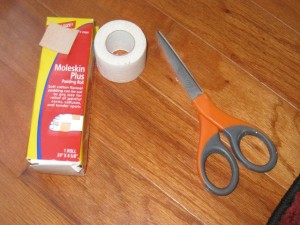Hand and Feet Blister Care
What are they?
Blister care is derived from understanding what blisters are. Blisters are sacks of fluid that appear on the outermost layer of skin after an area of skin becomes damaged. This fluid sack contains a clear liquid called serum which is blood plasma with the red blood cells removed. If the blister appears to be bloody, the red blood cells may not have been removed. If the blister becomes infected or inflamed its contents may contain pus.
These blisters can appear any where on the body yet they appear most commonly on areas of high friction. The hands and feet are the most common areas. Especially on the soles of the feet and on the palms of the hands where thick skin is tightly connected to the underlying structures.
Causes:
Friction/Rubbing is the main reason for hand and feet blisters. Constant rubbing against another object such as shoes may cause damage to your skin. In this case, a blister will form to protect the skin from becoming further damaged.
Treatment:
Blister care is dependent on covering the wound. If your blister is not terribly painful, do not pop it. Cover it with gauze or apply an ice pack to relieve some of the pain. If the blister has already popped, do not peel off the excess skin. Cover the damaged area with a dry bandage. You can even use over the counter Hydrocolloid dressings. In both cases, blister care can be done at home. After a few days the blister should heal on its own.
Blister Care for Burns
Causes:
Blisters can form not only from friction but as a result of a burn as well. Heat or chemicals may cause any part of the body to blister. 1st degree burns may result in blisters after the fact; however, 2nd degree burns will produce blisters immediately. Similar to friction blisters, these blisters are there to protect damaged skin. Burn blisters may also appear after chemical burns; this is called contact dermatitis.
Treatment: 
Blister care for burn blisters is very similar to hand and feet blisters. Apply a clean bandage and reapply often. If the bandage is stuck to the burn, soak it in warm water to make the bandage easier to remove. Apply a burn cream to prevent infection. If the burn is severe, see your doctor for further guidance.



